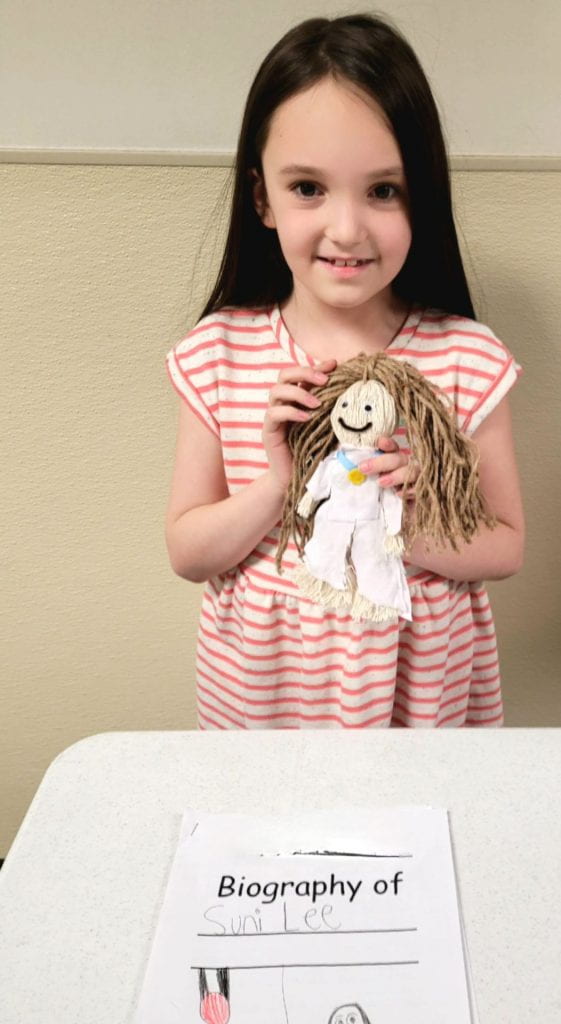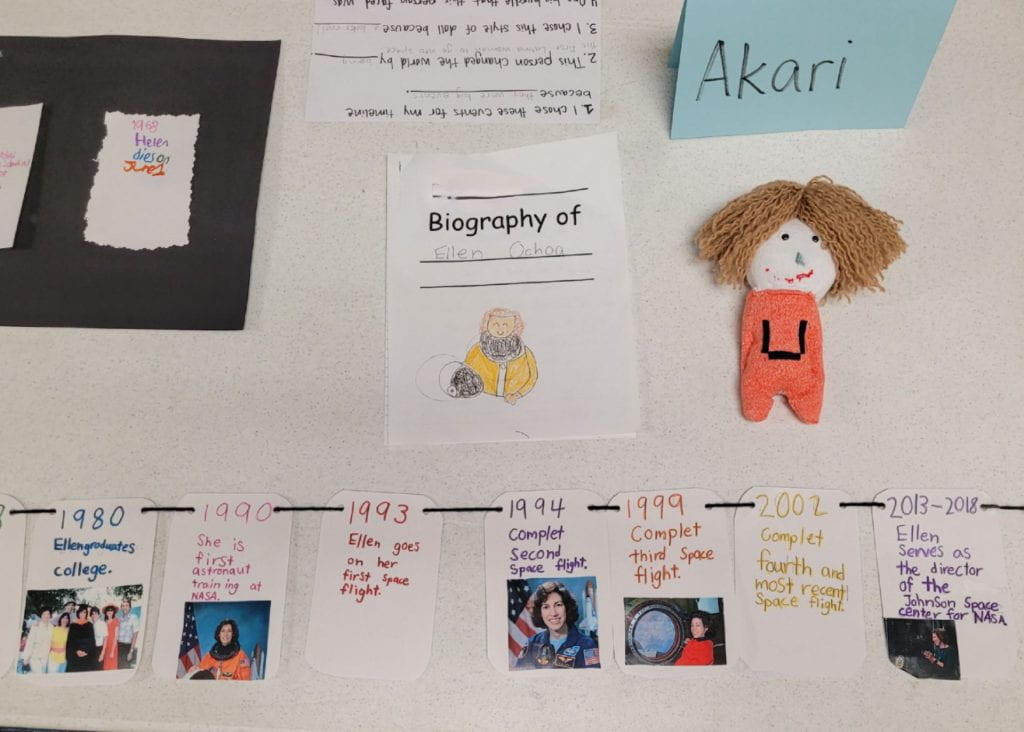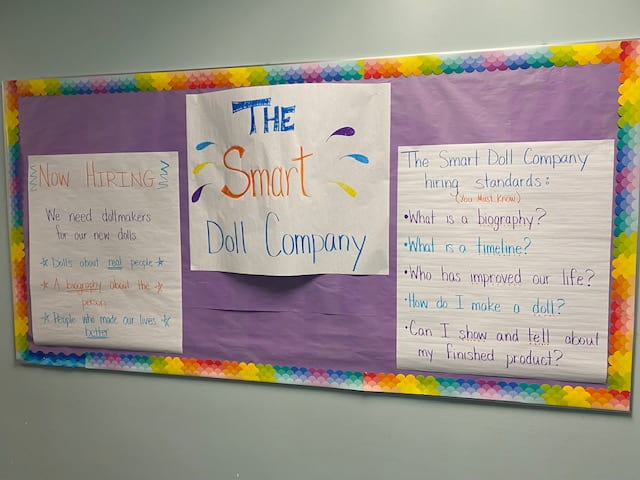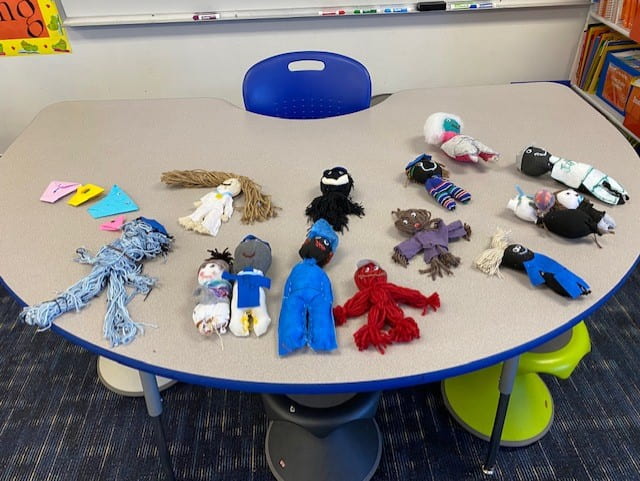Transfer must be the aim of all teaching in school. . . we need to put students in a position to learn far more, on their own, than they can ever learn from us.
-Jay McTighe
PBLs are grounded in a number of high-leverage concepts whose aim is be a “vehicle to communicate content”. Parts of that vehicle include: role-play, multiple methods of communication, and collaboration (Martin, 2021). While not an exhaustive list, it does illuminate some of the major components of PBL. Do all concepts need to be present in each and every PBL? No. That said, the use of these concepts not only increases student buy-in and enjoyment, but also the blending of knowledge, skills, and dispositions (21st Century Skills).
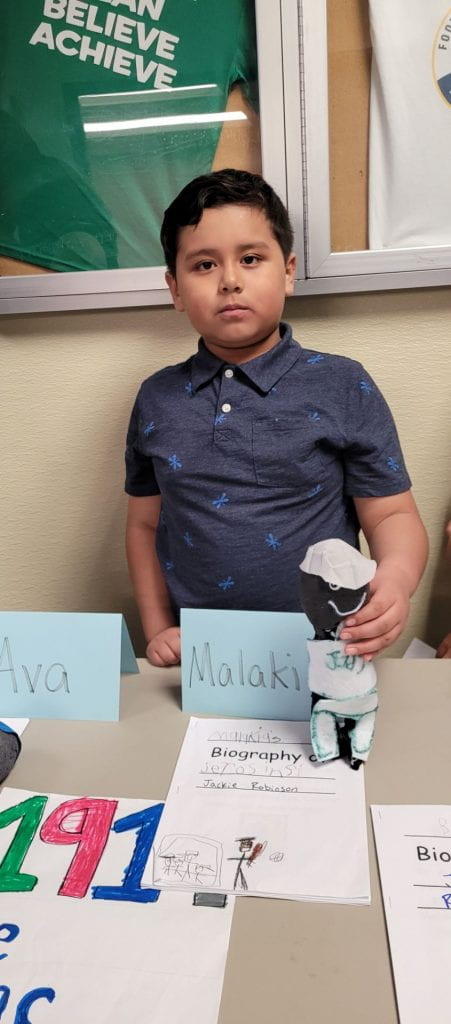
In the Second Grade classes of Erika Lee and Candice Steinke, PBL concepts were driven with precision. The “Smart Doll” PBL was born from their HMH Into Reading ELA resource (E. Lee, personal communication, 8 March, 2022). Candice and Erika noted that this particular PBL was a total of four weeks (including a 3-week module from Into Reading). The focus was on reading and writing with a Social Studies lens. Their Essential Question, “How do experiences shape our lives?”, allowed students to both investigate historical figures in history who changed the world and also authentically engage with 21st Century ( i.e. Generations or Essential) Skills through perseverance (sewing those dolls was difficult!) and communication (presenting to 5th grade students and adult evaluators).
The “Smart Doll Company” asked students to learn about a historical figure (e.g., Jackie Robinson, Helen Keller, Suni Lee). Based on what they learned, they developed a timeline of the person’s life, wrote a one- to-two page biography, and created (from scratch) a doll whose clothing or design elements represents the person they researched. Candice noted that students “were not transferring their knowledge from one topic to the next. We know that the science behind. . . PBL makes learning more engaging and therefore students want to learn, leading to remembering/understanding what they are learning” (C. Steinke, personal communication, 10 March, 2022). Students certainly proved her point!
When asked about their take-aways as teachers, Erika and Candice wondered about making a Common Formative Assessment (CFA) for the project. They realized “. . . that since we were using proficiency scales to stay aligned. . . we just had to look at the indicators that aligned with the unit . . . goals” (E. Lee, personal communication, 8 March, 2022). The two teachers additionally noted how much students learned over the course of the project. They used “. . .critical thinking skills to tell why that person had made a difference in the world and tell about how that person made a personal impact in the life of the student as well” (E. Lee, personal communication, 8 March, 2022). Candice added, “for this group the biggest learning was knowing that they are smart enough and strong enough to do the work on their own. They learned that everything doesn’t have to be perfect, that they can make mistakes, adjust and move forward” (C. Steinke, personal communication, 10 March, 2022).
Both Erika and Candice have sound advice for teachers wanting to pursue PBL work in their own classroom. Erica says, “Dive in! There is no perfect way to do a PBL; it can be as complex or as simple as you want it to be” (E. Lee, personal communication, 8 March, 2022). Candice adds, “It’s okay when people ask you, ‘What are you going to do about “(x)”‘ to not have an answer. Or to answer with, ‘I am not sure, the kids are taking the lead and we haven’t gotten to that step yet.’ Some days it will seem like the kids will never get finished, but you’ll be surprised as one by one they not only complete their project but help each other finish as well” (C. Steinke, personal communication, 10 March, 2022).
These two teachers certainly have demonstrated their PBL chops. Their skilled navigation through the rough waters of student uncertainty and deep content learning brought them to the shores of final presentations that demonstrated student perseverance and concept mastery. The high-leverage concepts mentioned at the start of the blog– role-play, multiple methods of communication, and collaboration– were demonstrated with gold-standard brilliance. Three cheers for work well done!
**Do you have great PBL work to share? Contact Adrienne Rossi for more information.**
Works Cited
Martin, K. (2021). Evolving education: Shifting to a learner-centered paradigm. Impress, LP.
